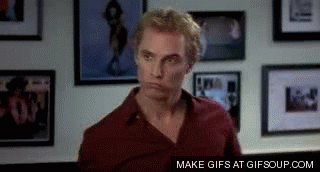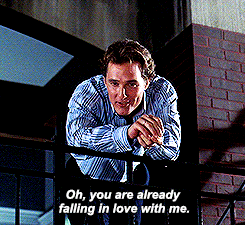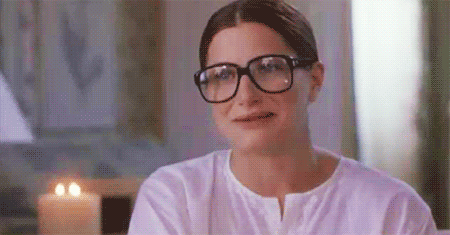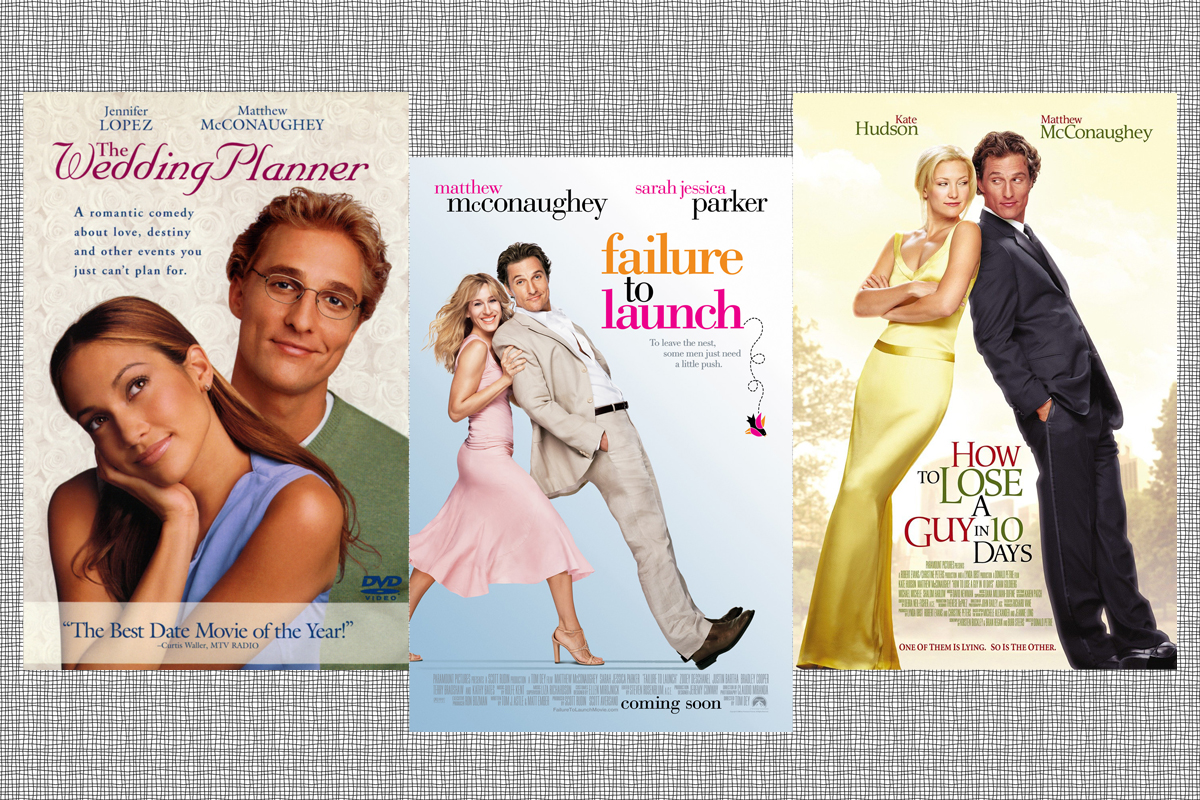I may be unique in that my boyfriend loves watching mainstream romantic comedies. Or maybe I’m just prescribing to gender norms by thinking I am. Either way, his passion for the genre has resulted in many a Sunday afternoon spent glued to the couch, watching that 2010 Katherine Heigl rom com, or that 2009 Katherine Heigl rom com, or that 2008 Katherine Heigl rom com, or that 2007 Kath — you get the point.
These movies are, as a rule, very bad. They almost never pass the Bechdel test (a work passes if two female characters converse about something other than a man), and they prescribe to painfully old-fashioned values for women. You can fit these values neatly into two categories — can the female lead in this rom com get a man, and almost as importantly, can she fit into her skinny jeans? If she passes these tests (she always does), then there’s a happy ending (there always is). The main characters are, as a rule, straight, white, and well off. Will Smith, Jennifer Lopez, and Eva Mendes sometimes break rule number two.
Also, either Judy Greer or Kathryn Hahn appears as the token, less-stunning-but-still-pretty best friend, and the female lead almost always works at a magazine made to look like Glamour or Elle. But really she just wants to write hard-hitting news!
As a kid, I remember watching many of these rom coms in theaters and loving them. Movies like The Wedding Planner, starring the venerable Jennifer Lopez and Matthew McConaughey, and How to Lose a Guy in 10 Days, starring Kate Hudson and Matthew McConaughey, seemed to sit at the peak of this inspiring genre. They depicted funny and satisfying girl-meets-boy scenarios in which the women were always beautiful, sharp, successful, yet vulnerable, and the men handsome, endearing, sturdy, yet sensitive.
But re-watching these movies as an adult, I saw right through them. Lopez’s wedding-obsessed character in The Wedding Planner is depicted as having a sad, incomplete life without a man, even though she’s extremely skilled at her job and impressively put together. In a scene meant to contrast with a wedding guest’s hypothesis that the wedding planner’s life must be “so romantic,” we see J. Lo making herself a healthy meal in her perfectly designed apartment, vacuuming curtains, and folding her shirts with precision I could never dream of (she uses little, plastic squares to ensure zero wrinkles).

As a child, I read that in the way the director wanted me to: The wedding planner is so alone that she spends all her spare time eating in front of the TV, folding, and vacuuming — tragic. As an adult, I read it realistically: Omg she made herself a nutritious looking salad and then she thoroughly cleaned her apartment and folded her clothes — superhero. Her character’s lovely home life and success as a young woman screams romance.
How to Lose a Guy in 10 Days, another movie from the time before we started taking Matthew McConaughey seriously as an actor, fairs even worse over time. In it, Hudson’s character has to write a column on “how to lose a guy in 10 days,” so of course she has to actually test out all of her theories on McConaughey’s character, an advertising executive aiming to win a diamond brand’s new campaign. To win this campaign, he has to get a woman to “fall in love with him in 10 days.” What convenient parallel story lines!

To “lose” McConaughey, Hudson exhibits a wide range of annoying “girly” behaviors, like crashing men’s poker night and giving her new man a fern to take care of, to represent how he has to continually nourish their growing relationship. Characters adhere blindly to their gender roles, and naturally, after the token major hiccup, they fall in love. Hooray!
This “token hiccup” is part of why I still enjoy these otherwise cringe-worthy tales. The rigid formula of not just rom coms but specifically the ones from my preteen/teenage years remains satisfying, even comforting, to watch.
For Glamour two Valentine’s Days ago, Shanna Yehlen described romantic comedies like this: “Two people meet, have a conflict in their way, and reunite to live happily ever after.” That formula gets even more specific if you consider rom coms from between around 1999 and 2014. Those movies specifically include the Judy Greer/Kathryn Hahn best friend, the polished-looking but still not quite satisfactory career (often in journalism — see The Holiday, How to Lose a Guy in 10 Days, Beauty and the Briefcase, 13 Going on 30, Never Been Kissed), a moment of fear on either one but often both sides of the couple that their chemistry was just a sham, and the happy reunion.
Even the rotating cast of characters proved predictable in that time frame. Drew Barrymore appeared with Michael Vartan in Never Been Kissed in 1999. Vartan appeared alongside Jennifer Lopez in Monster-in-Law in 2005. Before that she and McConaughey starred in The Wedding Planner. The latter also starred in two rom coms with Kate Hudson (Fools Gold being the other), who appeared in Alex & Emma with Luke Wilson in 2003, who played opposite Reese Witherspoon in Legally Blonde, who starred with Mark Ruffalo in Just Like Heaven in 2005, who appeared in 13 Going on 30 with Jennifer Garner, who starred with Matthew McConaughey in Ghosts of Girlfriends Past, and oh wait McConaughey was also in Failure to Launch with Sarah Jessica Parker, who also starred in Did You Hear About the Morgans? with Hugh Grant, who appeared with Drew Barrymore in Music and Lyrics in 2007. And we have gone full circle (let me just catch my breath), leaving out only a few key players like Ashton Kutcher, Cameron Diaz, and of course, Katherine Heigl.
The predictability of these movies is reassuring. It is also intrinsically linked to the nostalgia I feel when watching them. I remember when movie theaters constantly had at least one of these movies playing at any given time and knowing exactly what I was getting into when I paid for my ticket. These early 2000s rom coms still soothe the 12-year-old girl in me even though they totally enrage the 27-year-old woman I am now.
Newer mainstream, heterosexual romantic comedies are better. The female characters are less focused on marriage while the male characters are less focused on avoiding it. Not all of them end in happy couplehood (think How to Be Single, which came out right before Valentine’s Day in 2016). There’s a wider representation of ages (like Home Again, starring Reese Witherspoon, who plays a 40-year-old romancing a 20-something man) and race (like The Big Sick, which explores the true story of lead actor Kumail Nanjiani coming from a Pakistani family and dating an American woman). Not much wider, but still.
Even so, thinking about a classic, early 2000s rom com starring Luke Wilson and X or Jennifer Lopez and Y makes me want to stop what I’m doing right now and peruse Netflix until I find something that fits that guiltily satisfying, rigid formula. Is that a bad thing? Honestly, I kind of think so. I don’t want to like these movies because they encourage what I consider backwards ideals about women, men, gender in general, and relationships. They actively make me angry.
So, yeah, that’s bad — but sometimes, anger can be good. It can remind you what you’re fighting against, and fighting to improve. Sometimes, you need to be reminded of the ideals about womanhood you grew up with so you can remember to actively, gorgeously, progressively rebel against them. Without remembering what we’ve moved past, we might forget all the amazing work we, as women, have done.
So if you feel like a reminder of how women have moved forward since 1999, I suggest scrolling to the bottom of Kathryn Hahn’s IMDb page.




